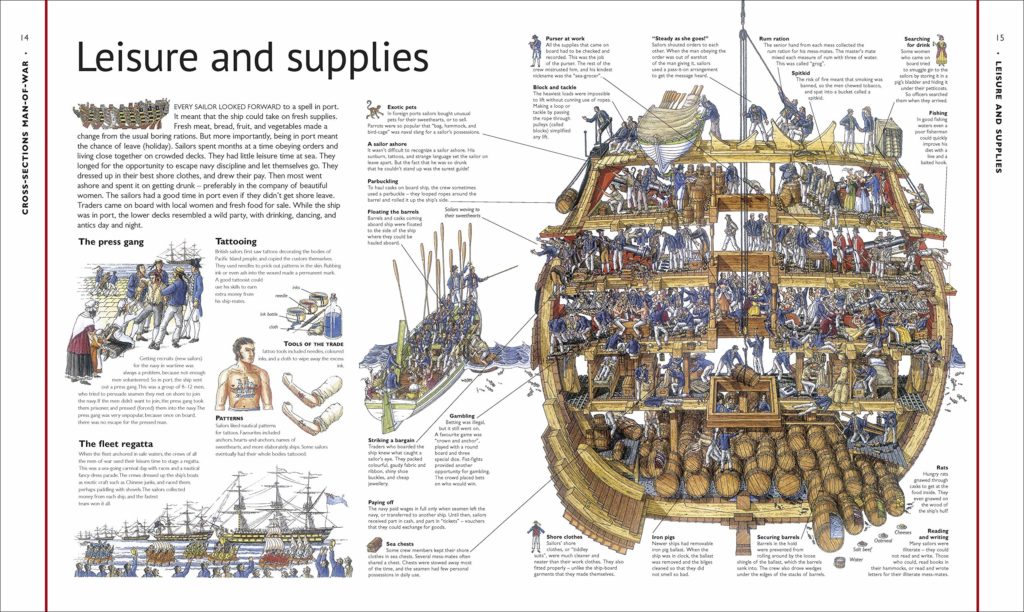The biographer of Isaac Newton is in an unenviable position. Usually the writer thrives on the access they can get to their subject — their writings, correspondence, contemporaneous accounts. But in Newton’s case, the biographer is cursed with too much material. Newton’s unpublished writings form an extensive body of work spanning an impressive and embarrassing array of interests; from science and mathematics, to alchemy and heretical theology, Newton was a compulsive note taker. Susan Dry’s The Newton Papers gives a careful account of how these papers managed to escape their fate languishing forgotten in one of England’s aristocratic estates, and into the hands of scholars who could read and make sense of them. Or so they hoped. The writings were so extensive, that they were impossible for any individual to meaningfully absorb. The hope that a definitive or comprehensive view of Newton might be revealed revealed itself to be futile. Dry even concludes that the endeavor is fundamentally misguided.
The first two Newton books I wrote about here took two distinct strategies to avoid the trap presented. James Gleick’s Isaac Newton took the light touch, providing a readable biography that was blessed with being selective in what it presented to a reader. Thomas Levenson’s Newton and the Counterfeiter focused on a lesser known chapter of Newton’s life — his role as Warden of the Royal Mint. Levenson’s book was blessed with seeing Newton out in London, interacting with the world, and thus managed the feat of stepping far enough back from the man that we could begin to see him more fully in his time and place. What emerged was a far more interesting portrait than one man being the turning point of history.
Levenson’s most recent book, Money for Nothing, takes this a step further, to the point that we no longer have a “Newton book”. The real subject is the South Sea Bubble, the arrival of modern finance, and the connection to the “Scientific Revolution”. Newton’s significance, beyond having himself bought shares in the South Sea Company, is that he had developed the keenest understanding yet of the relationship between equations and the world that they could represent.
Ultimately, this mathematical insight is at the heart of modern physics, the science that Newton, more than any other single thinker, would create. It it’s simplest form, the idea is this: the full picture, the complete geometrical representation of all the available solutions to a system of equations, can be understood as all the possible outcomes for a given phenomena described by that mathematics. Each specific calculation, fed with observations of the current state of the whatever you’re interested in, the flight of a cannonball, the motion of a planet, how a curveball swerves, how rapidly an outbreak of the plague might spread, makes a prediction for what will happen next. In his twenties, working on his own, with almost no systematic experience of the study of the real world, Newton did not yet grasp the full power of the ideas implied by the way he had begun to think about the math.
Money For Nothing, Thomas Levenson
That would come in time. But what made his annus mirabilis so miraculous, was the speed and depth with which Newton forged the foundations of his ultimately revolutionary way of comprehending the world.
Levenson explains that this was not the Ponzi scheme of capitalism that many claim it is. The value the South Sea shares was a measure of trust that the Treasury could reliably pay out in future. Even in these early days of state finance, there was an understanding that a state that was constantly borrowing could also be worthy and trusted creditor. The theory was that the size of the national debt as it stood was only important when considered against the future productivity of the nation. In principal, and indeed in practice, a nation that invested in itself would grow and develop economically, allowing itself to making good on future repayments.
The second advantage that the British government possessed was the inexorable passage of time. The funds it borrowed at any moment became bets on the nation’s economic life year over year. The wager was that the ongoing work of every new enterprise, each voyage, everything that Britons did to get and spend in the future, would create enough wealth to support the debts being incurred. The chancellor of the Exchequer didn’t have to treat every expense as a pay-as-you-go imperative. Whole nations, as London’s monetary thinkers has discovered, need not perform the virtues embodied in the very good advice to pay off a credit card balance in full every month. Rather, the task was to balance the needs of the moment with an analytical picture that could be drawn of Britain as a whole, all its getting and spending and accumulation, integrated over years to come.
Money For Nothing
Making this case can be divisive. Indeed many, such as Daniel Defoe, seem to have been divided within themselves about this development; on one hand despising the traders and stockjobbers who ran the secondary markets, while supporting the state borrowing that they enabled on the other. Many readers, if they were to correctly read the argument I believe the book is making, would probably object to it. The argument is that national debt and secondary markets for financial products are important, necessary, and work (except when they don’t). Making this argument can be as tricky as convincing someone of the merits of modern art or free verse. In the case of government borrowing and stock markets, the most obvious problem you have in this case is what ultimately befell the South Sea Company.
After almost a decade of providing reliable and unremarkable returns via direct Treasury payments, there was in 1720 an attempt to convert a huge amount of illiquid government debt into the liquid and more manageable form of South Sea Shares. At this point, the win-win-win equation that held between company, shareholder, and government was badly abused. Just about every kind of financial crime was practiced (insider trading, artificially pumping up prices, and outright bribery), and over course of the year the price of the shares increased ten-fold, from 100 GBP to 1000 GBP.
Among the reasons Levenson presents for the South Sea Stock crashing at the moment it did, was a collective realization that the stock could not offer a rate of return any better than the most ordinary of private loans.
In truth the company couldn’t even offer that. In a desperate attempt to prop up the share price, a completely unsustainable dividend of 50 GBP was offered to shareholders. While that would be a magnificent return on the “par” price of 100 GBP, on the recent sale price of 1000 GBP this was a very ordinary 5% return.

I cannot help but draw analogies with the current excitement around cryptocurrencies. In place of Hogarth’s satirical paintings, Defoe’s commentary, and Pope’s poetry, which accompany Levenson’s account, we have Twitter memes about buying the dip and right-clicking NTF art. We can also imagine that once cryptocurrencies begin to look a lot more “boring”, there might be a major correction. From this perspective the volatility of cryptocurrencies is less a liability and more of a feature.
If we are to embrace the analogy, there is a dis-quietening reality that the South Sea Bubble offers. Although the share price crashed, the political careers ended, and assets seized from many of the incriminated, the financial tools and derivatives that made it all possible would go on to form the backbone of modern finance (with some occasional regulation, if you can believe it). Similarly, even if bitcoin and etherium suffer some almighty crash, it doesn’t mean that it won’t find a place in the long term landscape of finance.
To be clear, I do not welcome a bitcoin future. Plenty of people, in particular those who understand what a blockchain actually is, are writing in strong terms about how little this offers. But at the heart of why I don’t like cryptocurrency is my suspicion of the world it would produce. As of the moment the main contributions of cryptocurrency to society are enabling cyber criminals looking to profit from ransomware, and diverting huge amounts of computational hardware, time, and energy towards “mining” these tokens. It is a libertarian future where governments can’t meddle with money on our behalf.

Where is Newton left in all of this? As best we can tell, he wisely sold his initial investment in the South Sea Company, at a profit, mid way through the bubble. He then unwisely reinvested later, as the price continued its precipitous rise, and lost out when the bubble crashed. So Newton, for all his unprecedented insight, was just as vulnerable to making a fool of himself as the rest.
Instead Levenson presents us with with Archibald Hutcheson MP, who despite his lack of scientific training best embodied the scientific analysis of the market when he sat down an began computations to derive how much the shares would have to return to justify their price.
This was recognizably a scientific revolutionary’s way of thinking. In the Principia Newton had constructed mathematical models that could explore the behavior over time of the moons of Jupiter or could predict the motion of a comet with a track that remained mostly unknown. He published his results both as an exercise in scientific reasoning and with persuasive intent: he sought to persuade his readers that what he had discovered “cannot fail to be true.” In his earlier writings, Hutcheson attempted much the same double act. His work focused on the dynamics of budgets instead of celestial bodies, but it spoke in the same unassailable language of numbers in flux — and thus asserted a claim to like power: just as Newton had declared his system of the world, Hutcheson’s arguments could not fail to be on the money.
Money For Nothing
Although this paragraph is immediately followed by a caveat.
There was, of course, a key difference between Hutcheson’s calculations and the utterly authoritative demonstrations in the Principia. When Newton bragged about his work’s unassailable accuracy, he could let nature be the judge, pointing to the agreement between his mathematical account of a comet’s flight and the track it actually traversed. Hutcheson could not command such certainty. Instead, he used the cultural power Newton and his friends had given to mathematical reasoning to strengthen his political argument. Whatever truth his algebra might contain was continent on the uncertain behavior of the human actors involved in any financial choice.
Money For Nothing
I have often been perplexed to read of kings, rulers, and governments being compelled to certain courses of action by economic necessity. It is hard to buy into a motivation you have little intuition for, and that belongs to a game for you don’t know the rules. Currency crises and borrowing crises and monetary crises and even national productivity crises are often referenced with little explanation. This is all to admit a glaring hold in my own education, but I certainly can’t imagine that I’m the only one.
It is a testament to the success of Levenson’s book that I found it as enlightening as I did. Having read no previous account of the South Sea Bubble, I was effectively going in cold. Levenson takes the reader through all the mechanics of the swaps and trades, providing the important back of the envelope calculations that make sense of what happened. There is no unnecessary hand-holding, and I did reread certain passages, but it was all there.
On top of this, Levenson populates his account with an impressive dramatis personae, providing a vivid portrait of British society reacting to these events. The final chapters outlined the future success of British state borrowing, and I possessed a good sense of what that actually meant. I will be able to make far sense of at least some of the history I was reading than I did before.
There are some conspicuous omissions in Levenson’s narrative. While the South Sea Company’s involvement in the slave trade is covered (practiced, but not profitably) there is no consideration of how the rise of credit based finance might have driven the growth of the trade itself. There is far more discussion of how financing Britain’s wars made a secondary market for government issued debt necessary, and it is argued that the success of the treasury policy that Robert Walpole, Britain’s first Prime Minister, developed in the aftermath of the bubble both incentivized avoiding war while also enabling Britain to “punch above it’s weight” when it did go to war. I found the passages that did address this particularly interesting, and would have read more. But there was no reflection on the implications of a system that enabled Empire, and while Levenson mentions the industrial revolution in Britain as a triumph for capital, I was left wondering about the huge social cost to the working classes of Britain.
To be fair, this would be the subject of a different book. (David Graeber’s Debt springs to mind). There is a very specific moral that Levenson wants to lead the reader to: That the crash of 2008 was fundamentally no different from the crash of 1720. Financial markets are ingenious human inventions, but they need careful supervision and regulation.
A fine message — and I agree. But given what was being invested in back in 18th Century England, you might imagine that some people would have been quite happy to have seen the system crash, investors ruined, and a political system collapse. There are very different kinds of consequences out there that investors or a nation should consider than a crash. Dangers we should also be vigilant for and legislate against.




